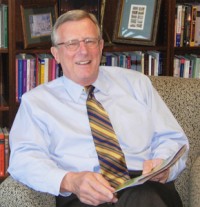Urban turnaround: Reorienting old churches
When Michael Harrington wrote The Other America 40 years ago, he pointed out that the advent of freeways linking suburban homes to downtown offices had rendered the poverty of the inner city invisible to many Americans. The city had become the home of the poor, the disadvantaged and the disenfranchised.
Since then there have been some important efforts to reclaim the possibilities and the promise of cities—part of a movment sometimes called the New Urbanism. Two articles in this issue make it clear that beneath the planning, zoning and development issues identified by the New Urbanism lie moral, spiritual and theological issues about what a community is and can be. So far, not many religious voices have taken part in the conversation.
That’s odd because we were there from the beginning. One of the first buildings constructed in towns and cities was a church—a place for worship and where basic human community is formed. And we’re still there, in the center of big cities and scattered throughout urban neighborhoods. On a ride on the Kennedy Expressway from O’Hare Airport to downtown Chicago you can see a series of wonderful old churches, massive basilicas built a century ago for the immigrant neighborhoods of Chicago.
Many of those old churches are very difficult to staff and maintain. One of the real challenges is that they were built for another era. The automobile and suburban sprawl changed everything for city churches.
A congregation I served in Columbus, Ohio, had to be virtually turned around because of the automobile. Members used to walk to church or were dropped off at the ornate street-front entrance. But by the time I came to the church, nobody had used that entrance for 50 years. People drove to church, parked in the lot behind it, and entered through what had been designed as a service entrance. It required some architectural creativity to reorient the church for a new age.
Every urban church has challenges like that. The congregation I currently serve enjoys a Gothic building designed by Ralph Adams Cram, one of the premier architects of the first part of the 20th century. After 18 years it still takes my breath away when I walk in off Michigan Avenue, through the small entryway, into the narthex and then enter the soaring heights of our worship space. But it never occurred to Cram that a bride might want to get into that narthex without walking outside through a Chicago gale, or that people who come to worship might need to use a rest room. These are some of the challenges that are part of being a church in the city—challenges well worth meeting for the great privilege of being a church in such a place.





